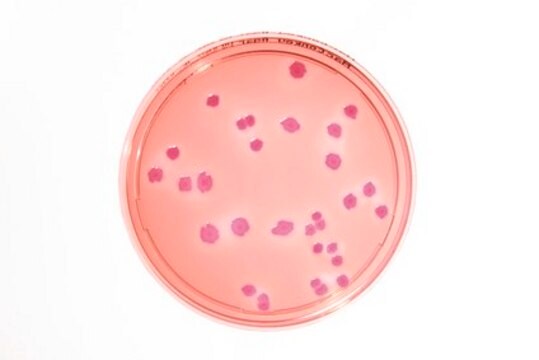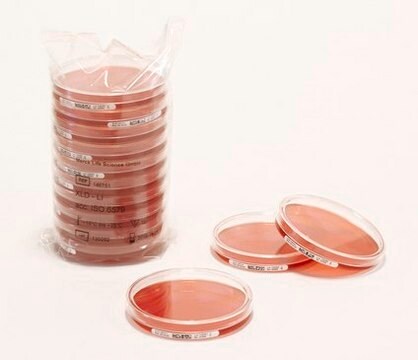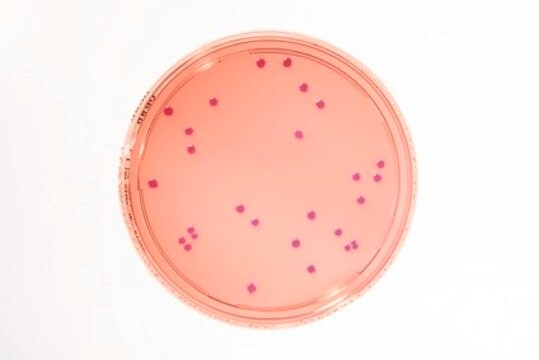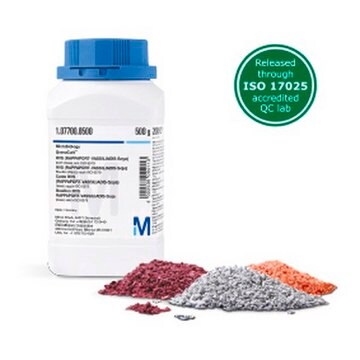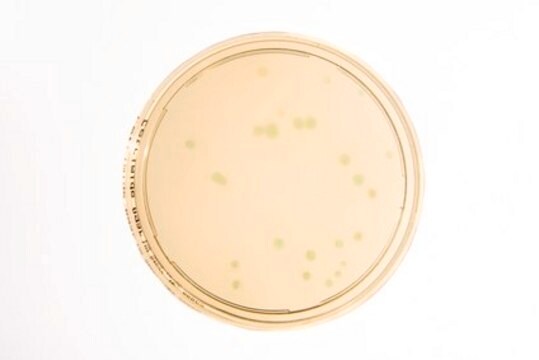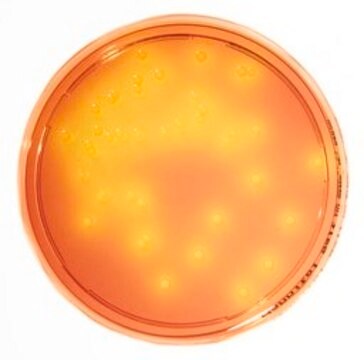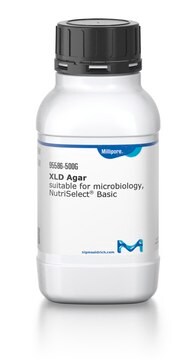1.46073
HEIMPLATE XLD Agar - LI EP+USP 30ml
Selective media for the isolation of Salmonella and Shigella in pharmaceuticals and clinical materials
Sinónimos:
Xylose Lysine Deoxycholate Agar
Iniciar sesiónpara Ver la Fijación de precios por contrato y de la organización
About This Item
Código UNSPSC:
41106217
NACRES:
NA.74
Productos recomendados
Agency
EP 2.6.12
USP 61
Nivel de calidad
esterilidad
sterile
formulario
solid
Características
ready-to-use
técnicas
microbiological culture: suitable
pH
7.4 ( in H2O)
aplicaciones
microbiology
pharmaceutical
temp. de almacenamiento
20-25°C
idoneidad
Salmonella spp. (spp.)
Descripción general
Xylose Lysine Deoxycholate agar (XLD agar) is a selective growth medium introduced by Taylor (1965) for the isolation of Salmonella and Shigella species (Taylor and schelbert, 1971). It relies on the use of selective inhibitory component sodium deoxycholate and three indicator systems, i.e. xylose, lactose and sucrose combined with phenol red. Degradation of xylose, lactose, and sucrose to acid causes phenol red to change its colour to yellow. Sodium thiosulfate and iron (III) salt react to form a precipitate of black iron sulfide in the colonies, indicating the production of hydrogen sulfide. Bacteria which decarboxylate lysine to cadaverine can be recognized by the appearance of a purple coloration around the colonies due to an increase in pH. These reactions can proceed simultaneously or successively. This causes the pH indicator to exhibit various shades of colour, or it may change its colour from yellow to red on prolonged incubation. The culture medium is weakly inhibitory to other microbes due to the presence of sodium deoxycholate.
Aplicación
Xylose Lysine Deoxycholate (XLD) Agar - LI is a selective culture medium for isolation of Salmonella and Shigella in pharmaceuticals.
Envase
90 mm settle plates with 30 ml filling volume (20 or 120 plates per box) for long incubation (LI)
Código de clase de almacenamiento
13 - Non Combustible Solids
Clase de riesgo para el agua (WGK)
WGK 2
Certificados de análisis (COA)
Busque Certificados de análisis (COA) introduciendo el número de lote del producto. Los números de lote se encuentran en la etiqueta del producto después de las palabras «Lot» o «Batch»
¿Ya tiene este producto?
Encuentre la documentación para los productos que ha comprado recientemente en la Biblioteca de documentos.
Handbook of culture media for food and water microbiology
Curtis, GDW and Baird, Rosamund M and Corry, Janet EL et al.
Royal Society of Chemistry (2011)
Nuestro equipo de científicos tiene experiencia en todas las áreas de investigación: Ciencias de la vida, Ciencia de los materiales, Síntesis química, Cromatografía, Analítica y muchas otras.
Póngase en contacto con el Servicio técnico